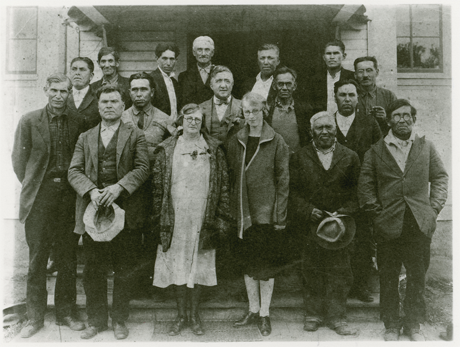 The Clallam Indian Council, held in Jamestown Washington in 1925.
The Clallam Indian Council, held in Jamestown Washington in 1925.
Back row: Sam Ulmer (Lower Elwha), Tommy Lowe (Jamestown), Wilson Johnson (Jamestown), Billy Hall (Jamestown), Peter Jackson (Port Gamble), Ernest Sampson (Lower Elwha), Johnson Williams (Jamestown).
Middle row: Joseph Allen (Jamestown), David Prince (Jamestown), Superintendent Dickinson, Sammy Charles (Lower Elwha), Benny George (Port Gamble).
Front row: Charlie Hopie (Lower Elwha), wife of Superintendent Dickinson, daughter of Superintendent Dickinson, Tim Pysht (Lower Elwha), Joe Anderson (Lower Elwha).
Photo courtesy of the Smithsonian Institution National Anthropological Archives, from Glass Negatives of Indians, collected by the Bureau of American Ethnology, 1850s-1930s.
|
Essentially, Tribes have to prove the following:
1. The Tribe has been identified as American Indian since at least 1900.
2. The Tribe has lived together in community since historical times.
3. The Tribe has governed itself since historical times.
4. The Tribe has provided governing documents which include who may be enrolled.
5. All of those enrolled in the Tribe descend from a historical Indian Tribe which functioned as a nation.
6. None of those enrolled are members of any other recognized Indian Tribe.
7. The Tribe has never been terminated by the United States government.
25 CFR Part 83
|